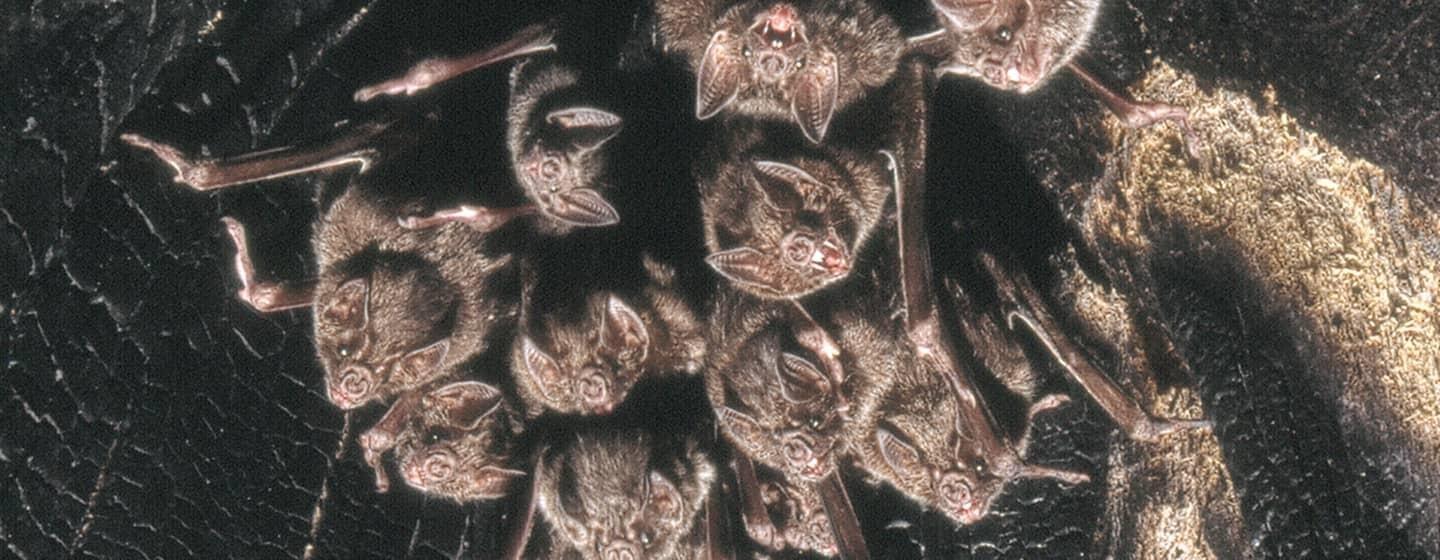Vampire Bats - Do They Want to Suck Your Blood?


Bats are already unique creatures because they’re the only mammals that can fly. But unlike other species of bats, vampire bats can also run, walk, and hop on all fours.
Oh, and they also live off of the blood of other organisms.
But don’t get too concerned about a vampire bat swooping down to “suck your blood”. Although these bats have been known to sample some human hemoglobin, their usual host animals are cows, pigs, horses and birds.
The common vampire bat, Desmodus rotundus, is found in the tropics of Mexico, Central America and South America and lives for an average of 9 years. They’re tiny, with 3.5 inch long bodies and 7 inch wingspans, and weigh around 2 ounces, although this can vary depending on how recently they’ve eaten. Sometimes they double their body weight during a meal!
Like the legends they’re named after, these bats survive on the blood of other organisms, but they don’t drain them of blood. They approach their target, normally from the ground, make a small incision with their sharp teeth, and then lap up the flowing blood with their tongues. Their saliva contains an anti-clotting enzyme which allows them to drink easily, and they’re so lightweight that they have been observed to drink blood from a sleeping animal for over 30 minutes without waking it up. They don’t remove enough blood to harm the source of their meal, but the bite they leave behind can be a source of infection or disease.
Hear more about these unique little mammals from vampire bat expert Dr. Gerry Carter in this video produced by PBS NewsHour:
If a vampire bat can't find a meal for two nights in a row, it will die. But there's a unique food sharing system these bats have developed. Well-fed vampire bats will often regurgitate blood to share it with other bats they're related to in exchange for grooming services. This behavior is especially frequent between female bats, and related female bats are especially likely to share excess food with new mothers, sometimes for up to two weeks after she gives birth.
By sharing food and grooming, these bats form strong social bonds with their direct families, and friendships with less closely related bats as well. As part of his research on vampire bat food sharing relationships with the Smithsonian Tropical Research Institute, Dr. Carter discovered that this extended social network is an important safety net for when family members aren't around.
“Vampire bats who feed more non-relatives don’t usually do better at getting fed when they are hungry,” Carter said in an interview with the Smithsonian Tropical Research Institute. “So why cultivate non-kin ‘friends’? We discovered that on the rare occasion that they lose a major food donor, they do much better. Their social network of food donors is wider and more robust.”
Bats often get a bad rap as "creepy" carriers of disease, but they play important ecological roles as pollinators and keep insect populations in check. One bat can eat up to 1,000 mosquito-sized insects in an hour!
Human's benefit from vampire bats' unique feeding habits medically as well. The anti-clotting properties of components of vampire bat saliva have been studied and used to develop treatments for patients that suffer from strokes (no joke - it's called Draculin).
Currently, researchers are examining viral resistance in bats to better understand how bats often live with high loads of viruses and other pathogens, yet don't have the same debilitating or deadly symptomatic responses as humans. The results of this research could directly affect how we treat patients with viral infections like COVID-19 in the future.